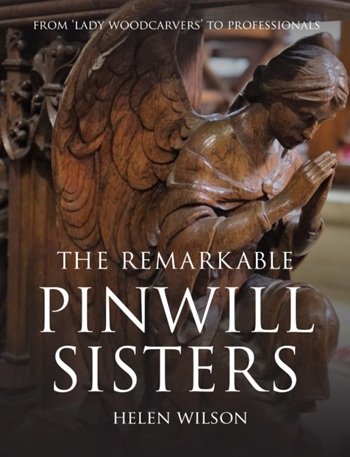Occupational health in the construction industry
The term ‘health’ has evolved over time from referring simply to the body's ability to function, to include physical, mental and social wellbeing.
According to ‘Occupational health risk management in construction. A guide to the key issues of occupational health provision’ published by the Health and Safety Executive (HSE) in November 2015:
| Occupational ill health refers to all health problems in the work environment. The term covers health problems workers bring to the workplace, as well as health issues caused or made worse by work. It covers serious and fatal diseases, physical effects on skin, breathing, hearing, mobility and functioning, and psychological effects on mental wellbeing. Effects may be immediate and visible, but are more often unseen and take a long time to develop, so vigilance and monitoring can be key to identifying problems. Some effects can be cured if diagnosed early; many can only be prevented from getting worse. Of course, some diseases are terminal. |
The guide was published due to a “...widespread misunderstanding of what ‘occupational health’ means in the construction sector and the employers’ misguided perception that health is more difficult to manage than safety”.
It suggests that construction workers are at least 100 times more likely to die from a disease caused or made worse by their work than they are from a fatal accident. It proposes that managing workplace health helps employers to retain experienced and skilled workers, and it helps employees maintain productive employment.
Key occupational health risks include:
- Exposure to asbestos, dusts including silica and lead.
- Chemicals, sunlight, diesel engine exhaust emissions.
- Frequent loud noise.
- Frequent or excessive use of vibrating tools.
- Frequent or excessive manual handling of loads.
- Stress and fatigue.
The guide proposes a risk management cycle that includes:
- Identification of hazards.
- Assessment of risks.
- Selection of controls.
- Implementation and recording of findings.
- Monitoring and review.
Occupational hygiene is the professional discipline of recognising, evaluating and controlling risks to health in the workplace to prevent ill health.
For more information see: http://www.hse.gov.uk/aboutus/meetings/iacs/coniac/coniac-oh-guidance.pdf
[edit] Related articles on Designing Buildings
- Asbestos.
- CDM.
- Changing attitudes towards the mental wellbeing of early career Architectural Technology professionals.
- Construction Industry Advisory Committee.
- Control of Substances Hazardous to Health (COSHH).
- Deleterious materials.
- Dust.
- Environmental health.
- Hand-arm vibration syndrome.
- Health and safety consultant.
- Health and safety executive.
- Health and safety offences, corporate manslaughter and food safety and hygiene offences definitive guideline.
- Health and safety.
- Health.
- Heat stress.
- ISO/PAS 45005 Guidance for working safely during COVID-19.
- Mental health.
- Occupational accident.
- Occupational health risk management in construction. A guide to the key issues of occupational health provision
- Occupational injury.
- Personal protective equipment.
- Reporting accidents and injuries on construction sites.
- Silica.
- Understanding mental health in the built environment.
- Vibration white finger.
- Wellbeing.
- Work at height regulations.
- Working in confined conditions.
Featured articles and news
EPC changes for existing buildings
Changes and their context as the new RdSAP methodology comes into use from 15 June.
Skills England publishes Sector skills needs assessments
Priority areas relating to the built environment highlighted and described in brief.
BSRIA HVAC Market Watch - May 2025 Edition
Heat Pump Market Outlook: Policy, Performance & Refrigerant Trends for 2025–2028.
Committing to EDI in construction with CIOB
Built Environment professional bodies deepen commitment to EDI with two new signatories: CIAT and CICES.
Government Grenfell progress report at a glance
Line by line recomendation overview, with links to more details.
An engaging and lively review of his professional life.
Sustainable heating for listed buildings
A problem that needs to be approached intelligently.
50th Golden anniversary ECA Edmundson apprentice award
Deadline for entries has been extended to Friday 27 June, so don't miss out!
CIAT at the London Festival of Architecture
Designing for Everyone: Breaking Barriers in Inclusive Architecture.
Mixed reactions to apprenticeship and skills reform 2025
A 'welcome shift' for some and a 'backwards step' for others.
Licensing construction in the UK
As the latest report and proposal to licence builders reaches Parliament.
Building Safety Alliance golden thread guidance
Extensive excel checklist of information with guidance document freely accessible.
Fair Payment Code and other payment initiatives
For fair and late payments, need to work together to add value.
Pre-planning delivery programmes and delay penalties
Proposed for housebuilders in government reform: Speeding Up Build Out.
High street health: converting a building for healthcare uses
The benefits of health centres acting as new anchor sites in the high street.
The Remarkable Pinwill Sisters: from ‘lady woodcarvers’ to professionals. Book review.
Skills gap and investment returns on apprenticeships
ECA welcomes new reports from JTL Training and The Electrotechnical Skills Partnership.
























